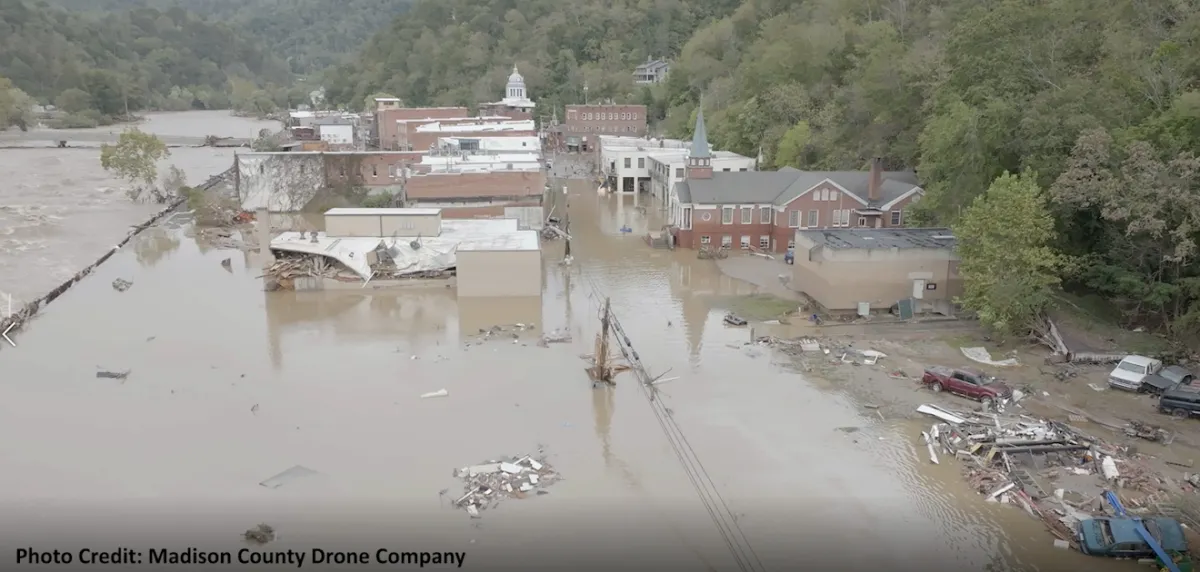
Lessons from Helene
Our rivers and streams act like giant drains on the landscape and during extremely high flows riparian areas and floodplains become completely inundated. During Hurricane Helene in Western North Carolina these floodwaters created devastation and sadness beyond belief. These extremely high flows not only compromised over 400 bridges in the area but also initiated over 400 landslides. It’s now evident in our opinion that floodplain mapping science will now need to be updated and improved, but it’s also the responsibility of regulating agencies (Army Corps of Engineers, State Divisions of Water Resources and Local governments) to enforce these regulations. Careful review of building permits and approval by local governments are essential.
After the storm it is up to all of us, especially in these mountains laced with streams and rivers, to protect ourselves as we rebuild from Helene.
Devastation should not be called unexpected. As we begin the reconstruction process, are there lessons from Helene that we can put into practice? The extreme rainfall and winds caused a natural disaster across the North Carolina mountains. Yet, land and water management increased the hazards and exposure to extreme events. We believe that there are five human factors that must be considered during floods.
1. Much of the damage and loss of life from hurricane Helene was because we continue to build in floodplains.
2. We observed that bridges can easily become dams when trees and human structural debris collect against the bridges. This extensive flooding would not have occurred if the bridges were not there or if the bridges were constructed to allow the passage of the large debris. Better design and construction of bridges by the NCDOT can help reduce this risk.
3. Risk of Landslides on steep slopes. Over 400 landslides were recorded following the extremely high rainfall events. Soil moisture and erosion increase exponentially during these events. Often landscape scars such as poorly designed roads on steep slopes can initiate a slide. Scientists have noted that healthy forests retain rainfall rather than allowing runoff because of higher organic matter and deeper more extensive root systems. Landowners in landslide prone areas need to become familiar with safety guidelines.
4. Protect or restore healthy floodplains. Stream hydrologists have taught us that when streams and rivers become incised and lose the connection to its floodplain, the force of the flow is increased exponentially. However, if high stream flows have access to its floodplain the erosive forces will be lessened. In our opinion, retaining or restoring healthy floodplains, rather than building in them, is one instrument we can use and study to mitigate the effects of flood waters
5. Scientists should develop watershed-wide indices for biological health of rivers and erosion potential. Biologists have stated that the longest-term effects of the storm will be on aquatic species and aquatic habitats. Scientists predict that recovery will be more rapid in reference watersheds that have upstream refugia. But what about watersheds that don’t have this resource? How long will recovery take in these watersheds?
Hurricane Helene created a new level of destruction and there is an increased probability, unless we implement new mitigation strategies. It is essential to build mitigation strategies to reduce exposure to hazards. Some of the ideas were presented above. Planning and implementing mitigation strategies and infrastructure is the best way to reduce the risk of flooding and catastrophes. Hurricane Helene and the predecessor rain event created a level of destruction not seen in this area for hundreds of years. Unless we build effective mitigation strategies, it will happen again.
